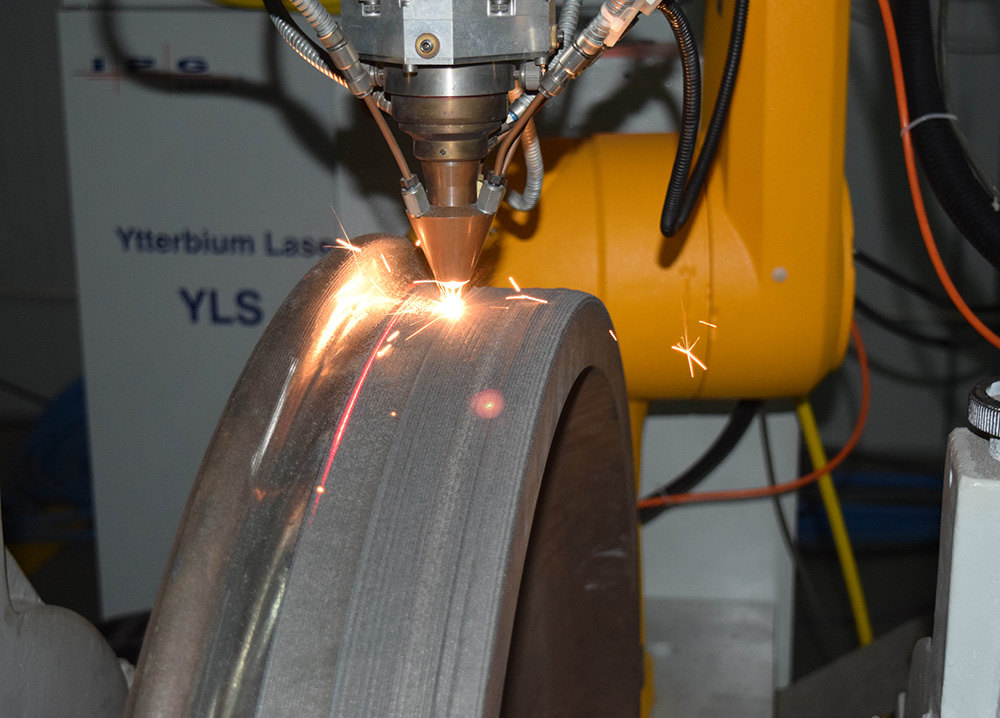Have any questions?
Get in touch-
Tel : +86 18355532477
-
Whatsapp : +8618355532477
-
Email : 247137166@qq.com
-
Skype : 247137166@qq.com
Have any questions?
Get in touchTel : +86 18355532477
Whatsapp : +8618355532477
Email : 247137166@qq.com
Skype : 247137166@qq.com
WILA uses the LDM2500-60 semiconductor all-solid-state laser and adopts the synchronous powder feeding iron-based alloy powder method to improve the surface of the high-speed train ER8 wheel by laser cladding to increase its wear resistance and hardness. The orthogonal test selects the relatively superior The process parameters. Using JSM-6360LA scanning electron microscope, Bruker D8ADVANCE X-ray diffractometer, XHV-1000Z digital microhardness tester, M-2000 friction and wear tester, the microstructure and performance of the alloy coating The bonding strength of its interface is tested.
The results show that the optimal process parameters are P=1.6k W, v_s=400 mm/min, v_f=25 g/min. The hardness of the coating reaches 444 HV, which is 1.42 times that of the base ER8 steel. Compared with the base material, Its relative wear resistance is as high as 2.1.
Payment:
TTProduct origin:
ChinaGoods stock:
10Shipping port:
ShanghaiLead Time:
20 days after receiving the depositMethod for repair of rail wheels
The damage to the wheel tread of high-speed trains mainly originates from three aspects: circumferential wear, rolling contact fatigue, and braking. Circumferential wear will cause changes in the shape of the wheel tread, which will lead to mismatching of wheel-rail profiles and change the wheel-rail contact geometry; rolling contact fatigue damage will cause fatigue cracks and peel off pieces; braking will cause thermal peeling and heat Cracks, emergency braking may also cause tread scratches. These three types of damage do not exist independently when the vehicle is running but affect each other.
Through laser cladding technology, WILA obtained an iron-based cladding layer that is metallurgically bonded to the surface of ER8 steel. The composition of the cladding layer mainly includes matrix γ-Fe and hard carbide Cr7C3 and alloy elements such as Mn, Mo, Ni, etc. These compounds form a replacement solid solution with γ-Fe in the cladding layer, which greatly increases the strength of the cladding layer. The solidification structure of the cladding layer is divided into plane crystal area, columnar dendrite area, cellular crystal area, and equiaxed dendrite area from the inside to the outside. The formation of these crystal structures is determined by the temperature gradient/solidification rate (G/R).
The repaired wheel tread has no flaw detection, the microhardness of the cladding layer is 444HV, and the relative wear resistance is as high as 2.1, which fully meets customer requirements.

click here to leave a message